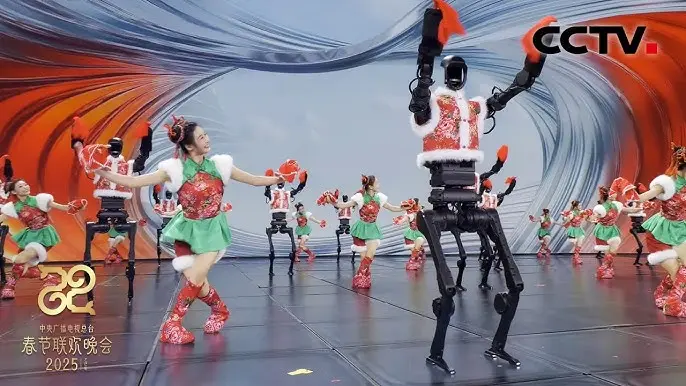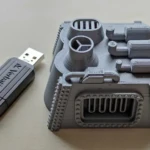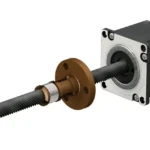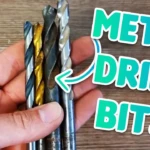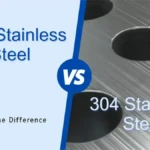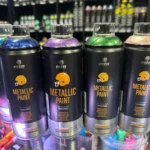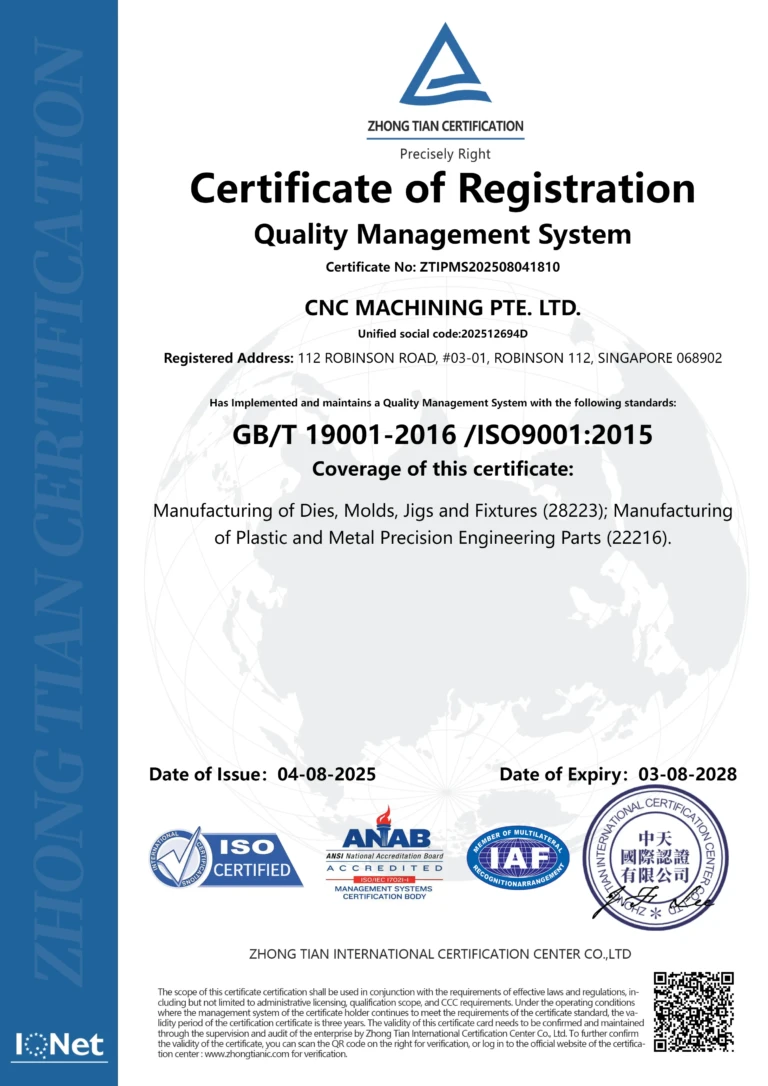Precise and intricate dance: mysterious CNC machining steps
In a world where increasingly complex and precise components are required, CNC (Computer Numerical Control) machining is the cornerstone of modern manufacturing. It transforms digital design into tangible advanced parts from countless industries. At Greatlight, we leverage this technology to the pinnacle: Advanced five-axis CNC machiningCoupled with comprehensive post-processing, even the most challenging metal parts manufacturing issues. This article breaks down the basic steps of the CNC process and reveals the convergence of innovation, engineering and meticulous execution behind each custom precision component.
CNC process: gradual failure
While it seems straightforward from the outside – feeding with the material, the machine cuts it, but CNC machining involves a thoroughly planned arrangement of digital and physical steps:
-
Design and CAD Modeling: The Formation of Imagination
- foundation: Each special part begins with a carefully crafted digital design. Exquisite use Computer-aided design (CAD) softwareEngineers (or our customers) create detailed 3D models of components. The model defines each dimension, tolerance (allowing variation), surface finish requirements, and geometric features.
- Greverlight Advantage: At this critical stage, our team works closely with our clients. We can perfect design design (DFM) to ensure the best results with our five-axis functionality – the features that minimize setup, reduce costs and enhance structural integrity of complex geometries are proposed. We handle exquisite designs to push boundaries.
-
CAD to CAM conversion: Programming the path of the machine
- Transform vision into action: The CAD model is not ready yet. Computer-aided manufacturing (CAM) software Enter the center stage. Here, the manufacturing engineer defines the tool route – the precise route of the cutting tool (end mill, drilling rig, etc.) will be done within the machine. This involves the choice:
- Cutting tools: Suitable for workpiece type, size, material.
- Cutting parameters: Spindle speed, feed rate, cutting depth – Optimized for material removal efficiency and surface treatment.
- Tool route strategy: Rough, Finished, Contoured – Each is tailored to specific operation and feature requirements.
- Five-axis accuracy: Our advanced five-axis cam programming unlocks functionality beyond standard 3-axis machining. By allowing the cutting tool (or workpiece) to move simultaneously on five axes (X, Y, Z + A and B rotation), we can program complex contours, undercuts and deep cavity smoothly, continuous paths in a single setup, ensuring accuracy and surface quality on precise parts.
- Transform vision into action: The CAD model is not ready yet. Computer-aided manufacturing (CAM) software Enter the center stage. Here, the manufacturing engineer defines the tool route – the precise route of the cutting tool (end mill, drilling rig, etc.) will be done within the machine. This involves the choice:
-
Machine Settings and Labor: Securing the Stage
- Precise positioning: Before the cutting begins, physical settings are crucial. The selected raw materials (metal blocks, rods, etc.) must be Strictly and accurately fixed Use special fixtures, vises or Chucks (labor solutions) in CNC machines.
- Zero Calibration: The machine must know the exact position of the workpiece in its coordinate space. Well-designed technicians "zero" Create a reference point (x = 0, y = 0, z = 0) by touching the machine on the surface of the workpiece with a probe.
- Tool loading and measurement: The preselected tools are loaded into the machine’s automatic tool changer (ATC). Tool length and diameter offsets are accurately measured and programmed to compensate for minor changes between tools.
- Advanced Fixed: Five-axis machining usually requires complex fixation to optimally present the workpiece for multi-faceted machining without reinstallation. We designed and utilized a sophisticated setup that maximizes our five-axis versatility.
-
Processing: Perform a subtraction symphony
- Automatic precision: By loading the program and verifying the settings, the machine will start the automatic cycle. The spindle rotates the cutting tool to high RPM. Guided by pre-programmed instructions, the tool immerses in the workpiece, accurately removing the material layer by layer. Coolant floods the cutting area to dissipate heat, lubricate and rinse debris (SWARF).
- Processing stage: This process usually involves:
- roughing: Actively remove bulk materials to achieve the approximate shape of the part, leaving a small amount (permit).
- Semi-fixed: Remove some of these allowances to perfect the shape closer to the final size.
- finishing: Final cutting with high precision and good feed/speed to achieve the desired dimensional accuracy and finish.
- Five-axis flexibility: Throughout the cycle, the five axes work together. This allows us to achieve complex angles, dramatic profiles, deep internal features or text on curved surfaces without manual repositioning – a key factor in maintaining tight tolerances and saving a lot of time. Whether it is processing aerospace turbine blades or complex medical implants, our technology is good at it.
-
Inspection and Quality Control: Verification Perfect
- Key Verification: Once the machining is complete, the parts must be strictly inspected against the original CAD model and drawing specifications. For precise components, this step is not negotiable.
- Advanced Metrics: We use complex equipment such as Coordinated Measurement Machine (CMM) Use a touch probe or laser scanner and optical comparator to measure critical dimensions and features with microscopic accuracy.
- Process Check: For long-term or critical components, inspections may be conducted in the intermediate stages to capture bias early, ensuring process control.
- Post-processing and finishing: The last step
- Beyond the original cut: Many parts require additional processing after processing. This is Greatlight One-stop post-processing service shine:
- Deburring: Cut off sharp edges and burrs formed during cutting.
- Grinding/polishing: Achieve specific aesthetic or functional surface textures.
- Heat treatment: Strengthen material properties such as hardness or strength.
- Anodizing, electroplating, painting: Provides corrosion resistance, wear resistance or specific color/appearance.
- Professional paint: (e.g., Teflon, ceramic coating).
- assembly: Integrate machining parts into the final assembly.
- Seamless integration: Handling internal processing of all post-processing ensures consistency, faster turnaround speeds, and eliminates logistical challenges to customers.
- Beyond the original cut: Many parts require additional processing after processing. This is Greatlight One-stop post-processing service shine:
Conclusion: Precise design, deliver in excellent manner
The journey from digital blueprints to the high-precision machining section is a complex dance of technology, engineering expertise, and a firm focus on detail. Each step – design, programming, setup, machining, checking and completing – is essential for achieving the required quality and functionality. Understanding this process emphasizes the value of working with expert manufacturers.
At Greatlight, our commitment is more than just operating machines. Our Investment The most advanced five-axis CNC technologycoupled with deep production expertise and integration Post-processing solutionuniquely positioned to meet your most demanding metal parts manufacturing challenges. We don’t just make parts; we design precise solutions quickly and reliably Competitive Price. From prototype to production, Great Provide the necessary technical confidence and seamless service to bring your vision to life.
Ready to experience the Greatlime difference in CNC machining? Discuss your custom precise parts requirements with our experts today and get competitive quotes optimized for your needs.
FAQs on CNC machining steps
Q1: Why is the CAD/CAM step essential in CNC processing?
Answer: CAD creates numbers "blueprint" Define the exact specifications of your parts. CAM converts this blueprint into specific tool paths and machine instructions. Skipping or performing these steps poorly can lead to errors, wasted materials or parts that do not meet the requirements. They are the key basis for precise execution.
Q2: What are the main advantages of 5-axis CNC machining over 3-axis?
A: The 5-axis machine allows cutting tools to approach the workpiece from almost any angle at the same time. This allows geometric shapes (e.g. impeller, organic shape, deep pocket) to be significantly complex, allowing parts to be in Single Settings (higher accuracy, faster) and provides quality surface surfaces on complex contours – often impossible or time-consuming features with 3-axis computers.
Q3: What happens during machine setup and why is it important?
A: Settings involve perfect protection of raw materials (factory), calibration machine understanding of part position (zero), installation and measurement tools. It ensures the dimension accuracy and stability of the entire processing. A poorly set up machine, even with a perfect program, will produce inaccurate or discarded parts. Our technicians’ expertise in refined five-axis setup minimizes this risk.
Question 4: How do I know if my part needs post-processing?
Answer: Post-processing solves the functions and aesthetics outside the original processing state. Ask yourself: Do parts need to withstand corrosion? Need a specific color or a non-reflective surface? Need enhanced hardness? Need thread tapping or very specific surface smoothness? Deburring? If the answer is for any of these (common), you may need post-processing services such as anodizing, gilding, painting, heat treatment or finishing/polishing. Greatlight’s integration services simplify this.
Q5: If the CNC computer follows the program, why do you need to check?
A: Machines and tools experience wear, materials may change slightly, and environmental conditions (such as temperature) may cause minor changes. Checked and verified Physical results Still meet all specified tolerances and requirements as described in the CAD model/drawings. This is the ultimate quality door, ensuring you receive parts that are designed to function. We use strict inspections such as CMM to ensure our output.
Q6: How Greatlight ensures quick customization and "The best price"?
A: Quick customization is achieved with our advanced five-axis capabilities (restore settings), efficient internal CAM programming, seamless workflow integration (help for completed designs), and optimized production planning. "The best price" The result of this efficiency – faster processing times, reduce scrap/rework due to accuracy, bulk material procurement, and eliminate middlemen by handling all the steps yourself. Our quotation process captures these efficiencies for your project.
Q7: What types of materials can you machine?
Answer: Gremight specializes in research Metalincluding but not limited to: aluminum (all series), stainless steel, steel alloys (carbon, tools), titanium, brass, copper and nickel alloys. We have the expertise and cutting tool technology to effectively handle common and exotic achievements. Discuss your specific material requirements; quick processing is our forward-looking.
